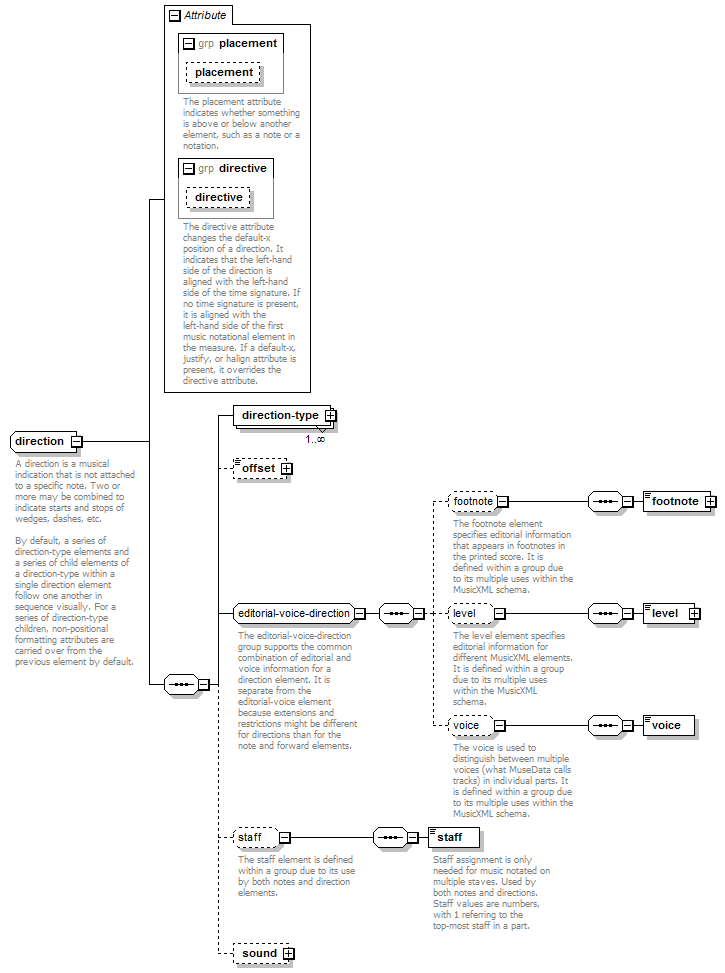direction
A direction is a musical indication that is not attached to a specific note. Two or more may be combined to indicate starts and stops of wedges, dashes, etc. By default, a series of direction-type elements and a series of child elements of a direction-type within a single direction element follow one another in sequence visually. For a series of direction-type children, non-positional formatting attributes are carried over from the previous element by default. |
Complex Type Information
Model

Attributes
| QName | Type | Fixed | Default | Use | Inheritable | Annotation |
|---|---|---|---|---|---|---|
| directive | yes-no | optional | ||||
| placement | above-below | optional |
Used By
| Element | music-data/direction |
Source
<xs:complexType name="direction"> <xs:annotation> <xs:documentation>A direction is a musical indication that is not attached to a specific note. Two or more may be combined to indicate starts and stops of wedges, dashes, etc. By default, a series of direction-type elements and a series of child elements of a direction-type within a single direction element follow one another in sequence visually. For a series of direction-type children, non-positional formatting attributes are carried over from the previous element by default.</xs:documentation> </xs:annotation> <xs:sequence> <xs:element name="direction-type" type="direction-type" maxOccurs="unbounded"/> <xs:element name="offset" type="offset" minOccurs="0"/> <xs:group ref="editorial-voice-direction"/> <xs:group ref="staff" minOccurs="0"/> <xs:element name="sound" type="sound" minOccurs="0"/> </xs:sequence> <xs:attributeGroup ref="placement"/> <xs:attributeGroup ref="directive"/> </xs:complexType> |